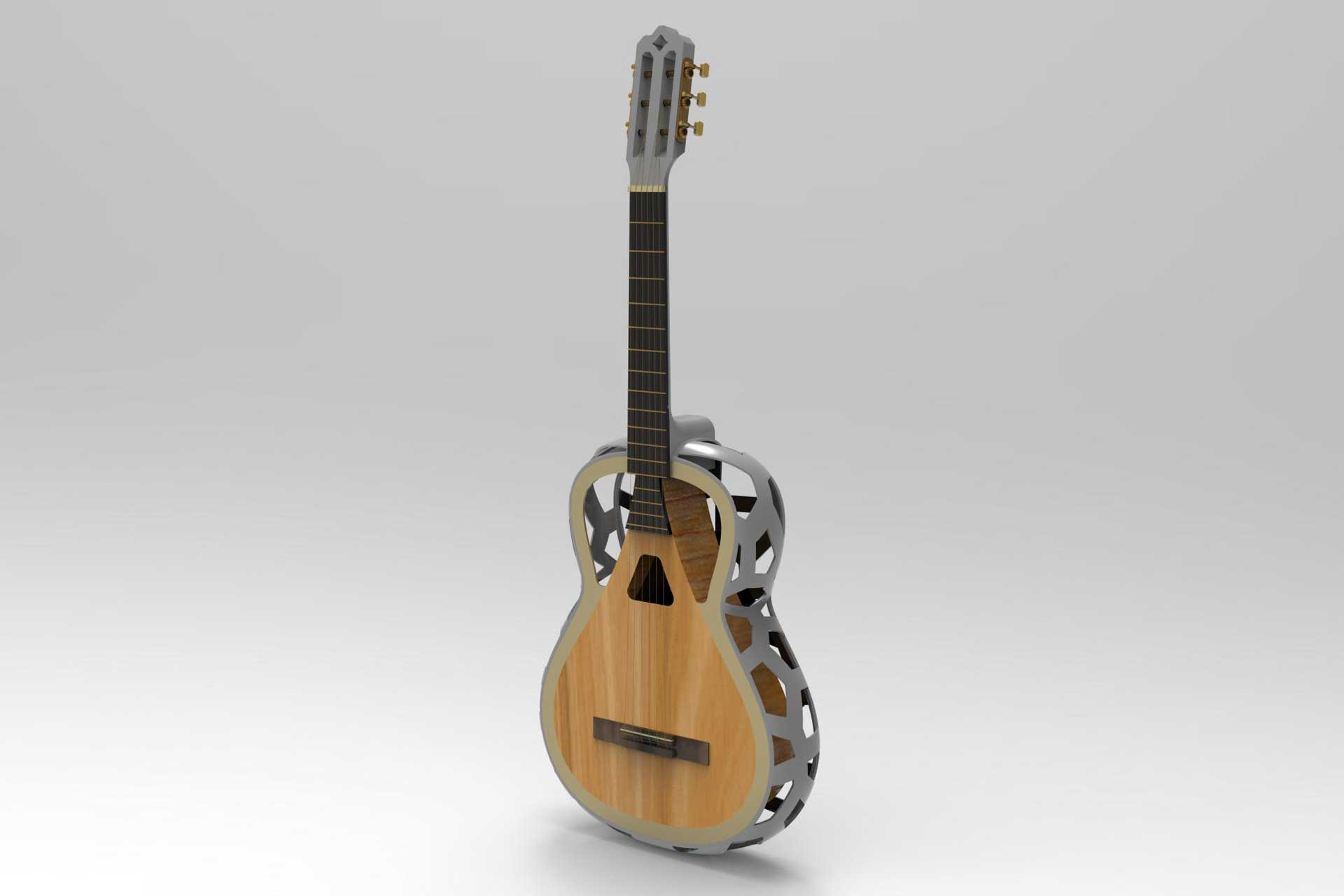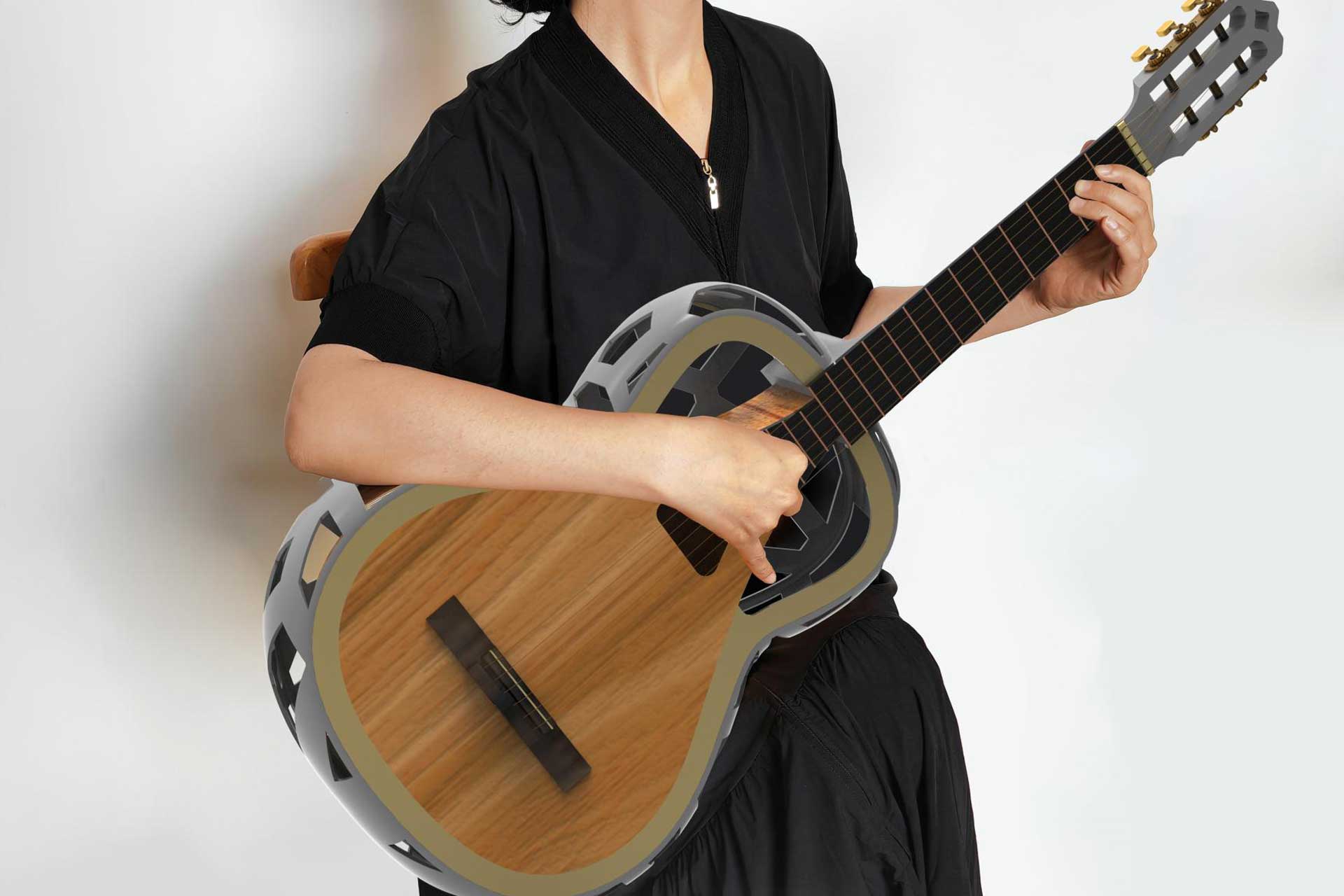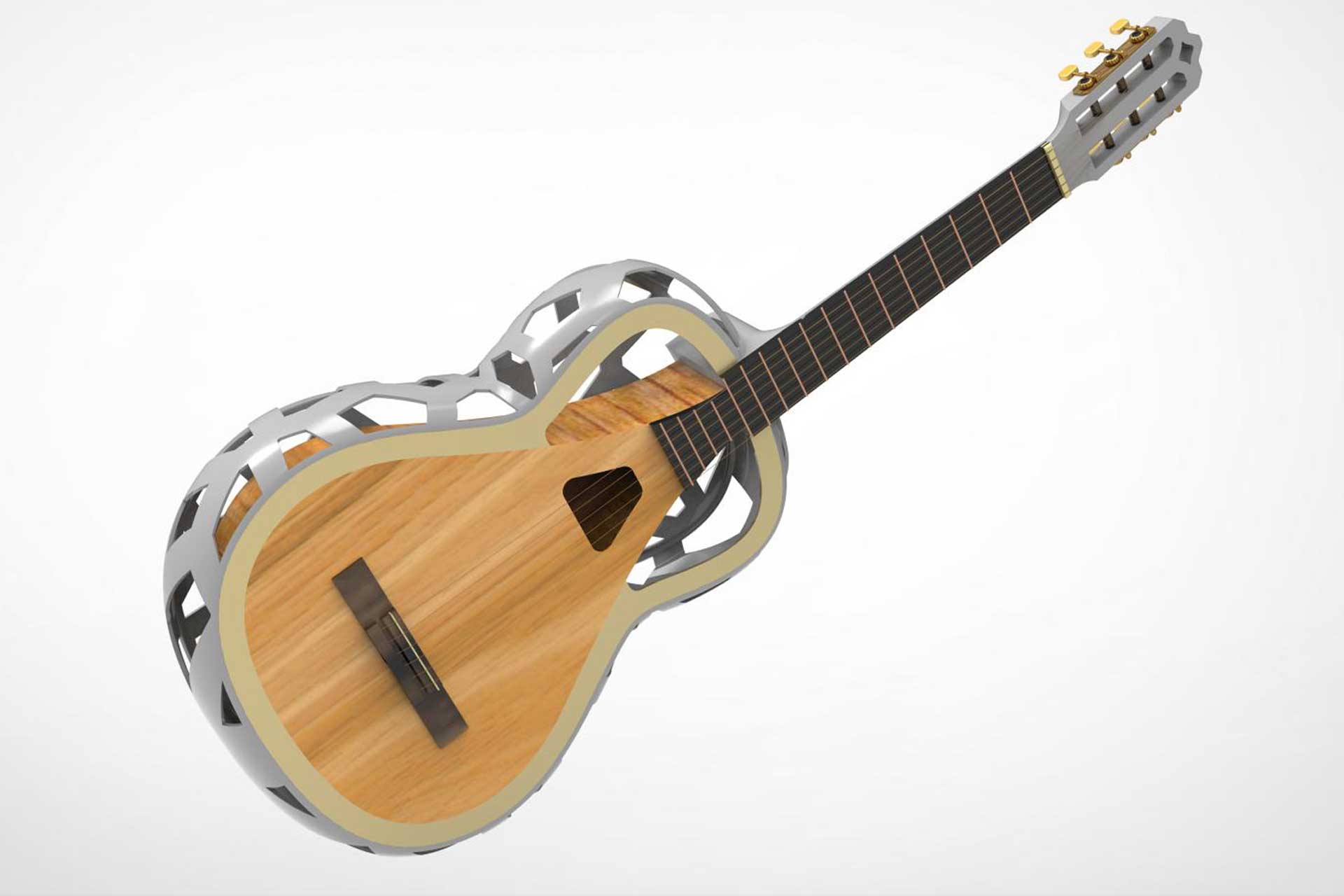The Sound of Innovation: Hongze Yang and LaceShadow

He Guangqian Brings Nature and Learning Together at Sanxia Bashu
February 25, 2025
How Qianru Zhang Built KoraCoach into a Smarter Financial Guide
February 27, 2025Hongze Yang
Hongze Yang, an industrial design teacher at Northeast Forestry University and a senior handmade guitar luthier, blends artistry with innovation in acoustic product design, visual cognition, and virtual display. Driven by a passion for craftsmanship, he finds joy in shaping ideas into tangible creations.
My name is Hongze Yang. I graduated from Jilin University College of Art, majoring in art design, and I am now a teacher of industrial design at the College of Home and Art Design of Northeast Forestry University, as well as a senior handmade guitar luthier.
I mainly focus on teaching and research in acoustic product design, visual cognitive design, and virtual display design.
I work in a university that specializes in forestry, and there is a lot of research on wood, including the acoustic properties of various types of wood. These rich research results provide good theoretical support for my designs, so I want to apply them to my acoustic guitar designs.
I've tried to do so in the hope of producing better guitars. There is no doubt that I have an inherent advantage in this area of research.
For me, good design is the most appropriate design. It grows naturally, appearing at the right time, neither silent nor noisy—enthusiastically participating in life without dictating to it.
It's like someone you like and not destructively involved, but simply bringing warmth and attachment.
My design style is neo-romanticism, a style that emphasizes emotion, passion, fantasy, and personal expression. I hope my design promotes the freedom of individuality and the essence of nature while countering purely efficiency-driven machine processing with elements of natural craftsmanship.
My goal is to reinvent the mood of romanticism while maintaining practicality.
When I'm designing, I usually start with a strong desire, such as the urge to improve something. I then think about it deeply and create lots of sketches.
During this process, I keep reminding myself of the original desire to ensure I’m not becoming overly ambitious. After that, I model the design in 3D software, refining it until it reaches a strong visual form. Finally, I create a prototype to check whether the shape I envisioned compromises functionality.
My design is a guitar that has been structurally modified to reduce the area on the top that is insensitive to vibration and to ensure that vibrations are not dampened by the body. This is achieved using a skeletonized, aesthetically pleasing structure that prevents the real back and side panels from coming into contact with the player's body.
I chose to participate in this project because I had been preparing for it for a long time, and I felt it was time to share my design with others.
The biggest challenge of this project was the change in the weight of the guitar case caused by the structural modification—would it still suit current players after the change? I can't ask them to re-adapt to an instrument.
Luckily, this challenge was successfully resolved. I didn’t alter the original guitar profile, which means players can still maintain their usual playing position. The difference is that the vibrations are now fully released, resulting in a much better sound.
What makes our country's design unique is its deep cultural heritage. First of all, our culture itself is unique, which is key. China has a long history and a rich, splendid culture that provides an abundant source of inspiration for the design industry.
The design elements in traditional Chinese culture are distinct in the history of world design. Additionally, China's culture offers uniquely Chinese solutions to problem-solving—solutions that, of course, also belong to the world.
I would advise them to develop a deeper understanding and love for their field, cultivate a passion for design, keep learning and practicing, apply their knowledge in real-world scenarios, and strengthen their understanding through hands-on experience.
They should foster innovative thinking and dare to explore new design concepts and methods. Throughout the design process, it's important to keep an open mind, embrace different perspectives, and challenge tradition and routine. Unique design solutions emerge through continuous thinking and experimentation.
I recommend those who want to improve their design skills to pay more attention to the world's high-quality online resources, because these online resources allow you to see in time what designers around the world are using to design and create.
As for specific resources, you will need to find them on your own to avoid any suspicion of advertising and to prevent personal bias. I recommend searching for them yourself, and if you can communicate directly with established designers, that would be even better.
Hongze Yang
Hongze Yang, an industrial design teacher at Northeast Forestry University and a senior handmade guitar luthier, blends artistry with innovation in acoustic product design, visual cognition, and virtual display. Driven by a passion for craftsmanship, he finds joy in shaping ideas into tangible creations.
Explore the journey of Yi Ching Wang, the Silver Winner at the 2024 MUSE Design Awards. Driven by a passion for skincare and a background in nutrition, she first developed products for her family, laying the groundwork for MUUS. This personal journey inspired her to create natural and effective solutions, ultimately leading to becoming the founder of MUUS.




